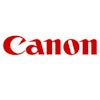An AI model could help physicians predict whether patients are at risk of death or heart attack based on coronary CT angiography (CCTA) tests, according to a study presented July 19 at the Society of Cardiovascular Computed Tomography (SCCT) meeting in Washington, DC.
An international team led by doctoral student Juan Lu of the University of Western Australia in Perth built a multimodal deep learning (DL) model that performed better than a unimodal model, as well as better than human experts at predicting major adverse cardiac events (MACE) based on patient CCTAs.
“The fully automated multimodal system exhibited the highest predictive capability while the automated CAD-RADS model’s performance was comparable to that of human experts,” Lu noted.
At the heart of the model is the Coronary Artery Disease Reporting and Data System (CAD-RADS), a standardized method first developed in 2016 for reporting CCTA findings in patients presenting with stable or acute chest pain.
The system serves as a clinical decision support tool that offers categories ranging from CAD-RADS 0 (no coronary artery disease) to CAD-RADS 5 (at least one totally blocked coronary artery) based primarily on overall measurements of coronary plaque.
While the prognostic value of CAD-RADS is well-established, studies have shown that automating its predictions using unimodal convolutional neural networks (CNNs) can enhance its prognostic value. Moreover, the emerging field of multimodal deep learning (DL) has shown promise in further improving its predictions, Lu explained.
The group built and tested a multimodal DL model that integrates an automated CNN CAD-RADS model with patient demographics and segmentations of the left ventricle, aorta, and heart.
To test the model, the researchers used data from 639 patients who had both imaging and clinical data available. The cohort had a mean age of 70. Of these, 45 patients experienced MACE (cardiovascular death or nonfatal myocardial infarction) within a 30-day follow-up.
First, an analysis of the CCTA findings by human experts to establish the ground truth revealed that 69 patients had CAD-RADS 0;, 257 had CAD-RADS 1-2, 73 had CAD-RADS 3, 136 had CAD-RADS 4, and 65 had CAD-RADS 5.
Compared with these classifications, the automated CNN CAD-RADS model achieved a comparable area under the receiver operating characteristic curve (AURROC) of 69% (p = 0.778).
Next, the performance of the proposed multimodal DL system surpassed that of the automated CAD-RADS model (p = 0.021) and demonstrating more balanced sensitivity and specificity, according to the findings.
| Performance of CAD-RADS and multimodal system in predicting MACE | |||
|---|---|---|---|
| Measure | CAD-RADS (Human Expert) | CAD-RADS (DL unimodal) | CAD-RADS (DL multimodal) + Left ventricle + Aorta + Heart |
| AUCROC | 67% | 69% | 82% |
| Sensitivity | 56% | 89% | 78% |
| Specificity | 77% | 45% | 79% |
| F1-score | 0.24 | 0.2 | 0.43 |
“This advancement has the potential to streamline clinical workflows and efficiently improve patient outcomes,” Lu concluded.




















